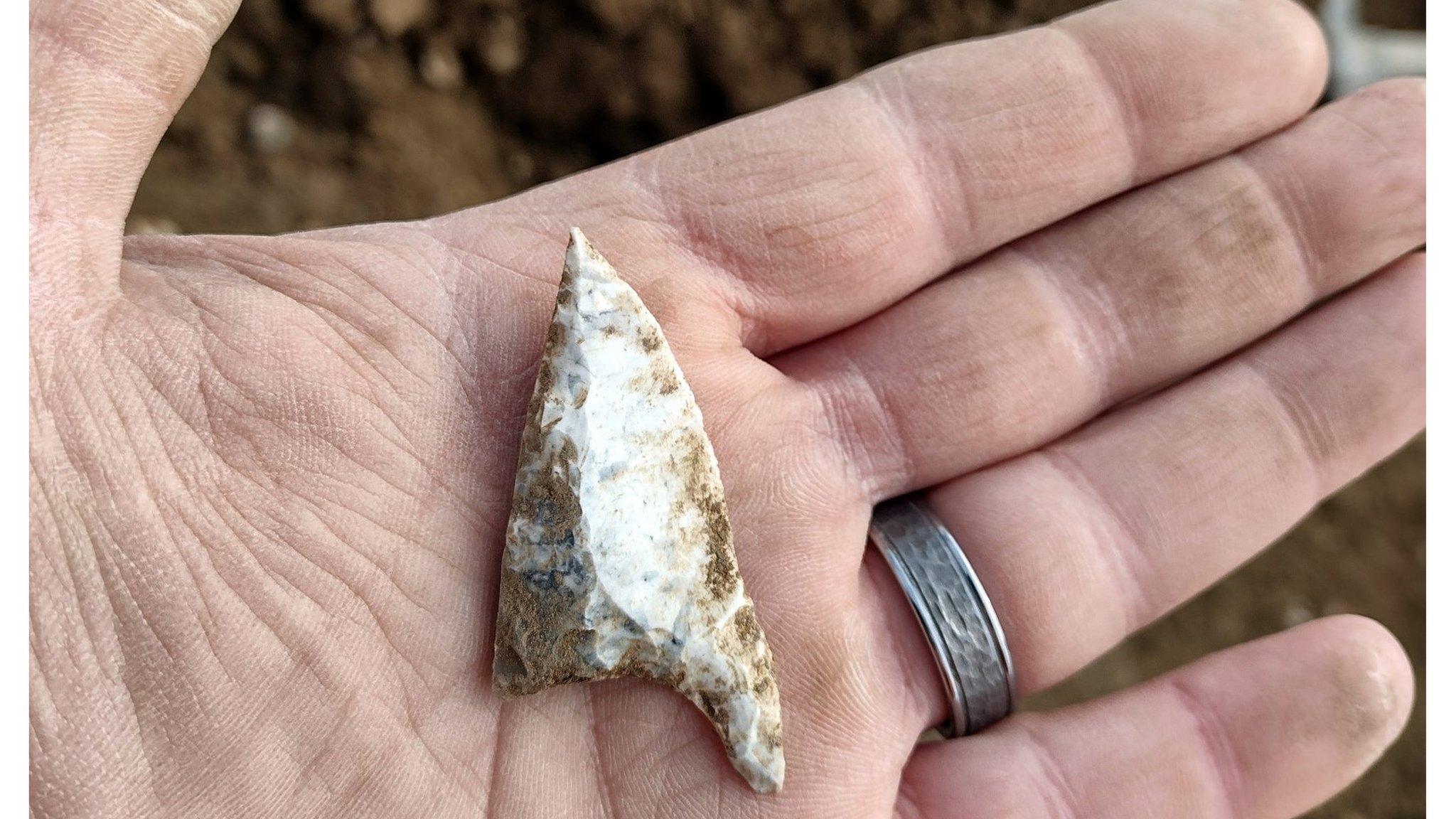Ancient Wiltshire monuments visible thanks to volunteers
- Published
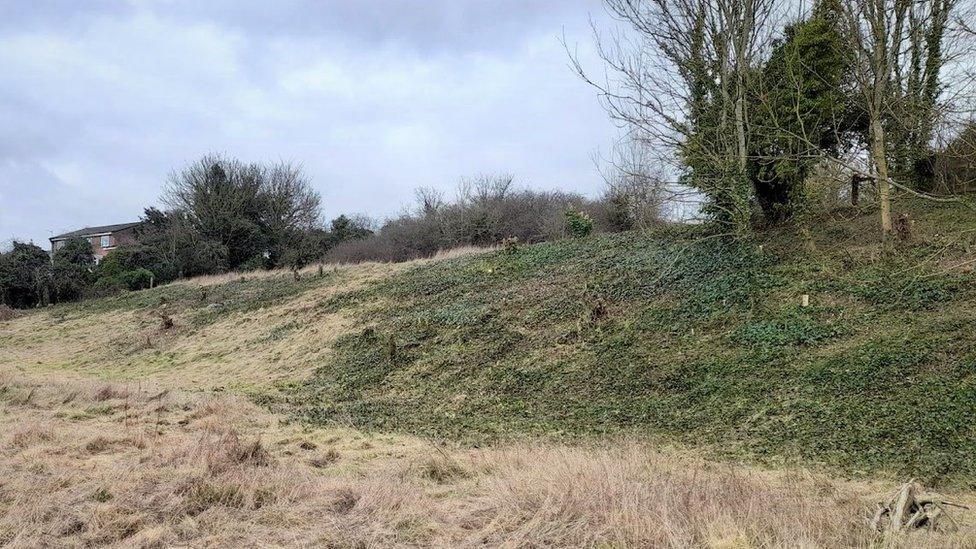
The medieval earthworks known as lynchets at Southmill Hill are becoming visible again
Volunteers have cleared vegetation from two ancient monuments to make them visible once again.
The project has revealed the remains of a medieval fortification at Cam's Hill on the outskirts of Malmesbury and medieval earth terraces (lynchets) at Southmill Hill in Amesbury, Wiltshire.
Historic England said the vegetation was causing damage to the monuments.
Volunteer Frances Matthews said: "I have wanted to see these lynchets free of scrub for many years.
"It is so rewarding to help achieve this," she added.
The work was carried out as part of Historic England's Monuments Management Scheme, which aims to improve the condition of sites on the national at-risk register.
Wiltshire has some of England's most important ancient sites, a large number of which are legally protected due to their national importance.
However, more than 100 of the sites are at risk of being lost.
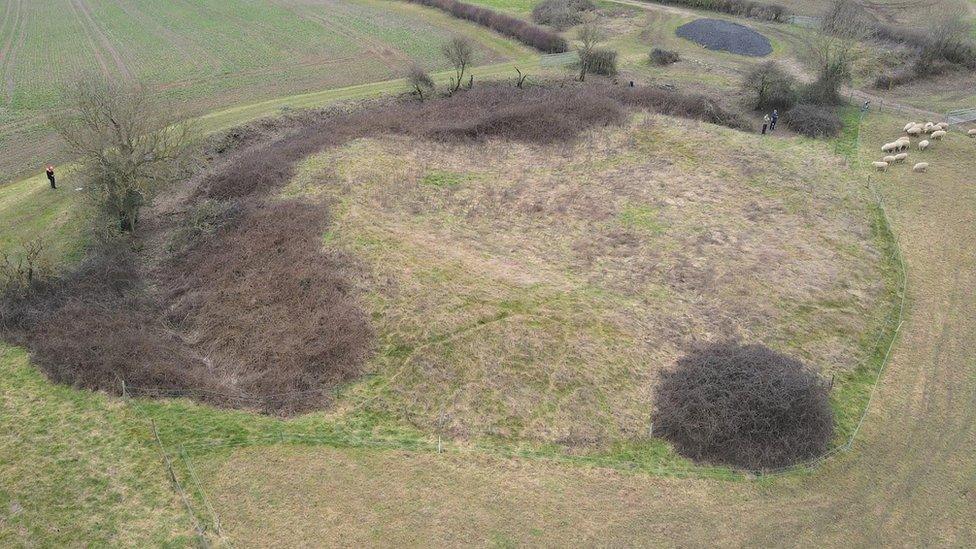
Cam's Hill, which survives as an earthwork enclosure with a wide defensive ditch, was obscured by overgrown vegetation
The project was funded by Historic England and Wiltshire Council's Archaeology Service.
The volunteers included people from the Friends of Ancient Monuments, the Council for British Archaeology Wessex, the Amesbury Scouts, and from the Athelstan Museum in Malmesbury.
Historic England explained the medieval fortification at Cam's Hill has never been archaeologically investigated, but it is thought to have been built by Robert of Gloucester during his siege of Malmesbury in 1139.
After being cleared, the monument is now visible from a nearby footpath.
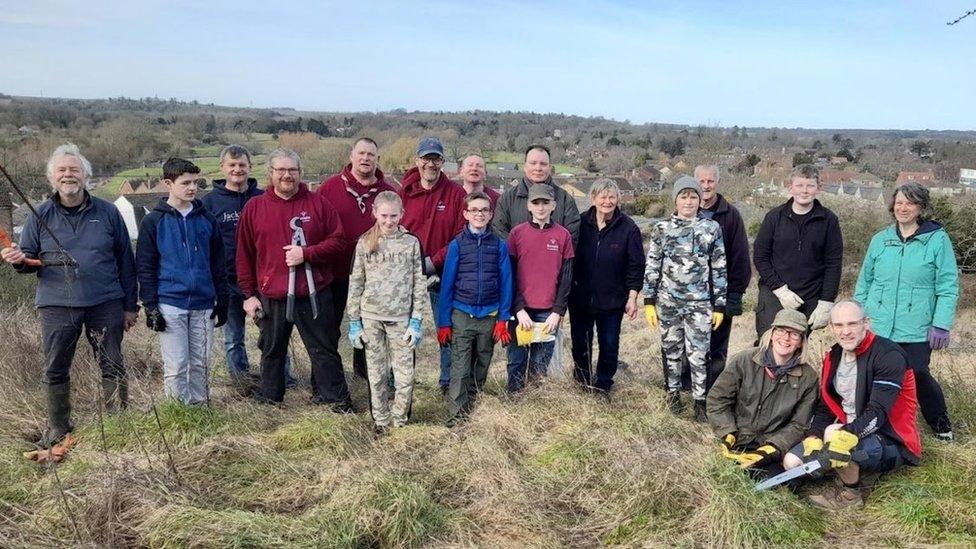
Voluntary work means buried archaeology at Cam's Hill is protected from disturbance caused by scrub growth
The medieval lynchets in Amesbury were once prominent landscape features in the south of the town.
But the field terraces, created by historic ploughing over hundreds of years, had begun to disappear below scrub and tree growth.
Work will continue on the area until 2025.
Nick Croxson, Heritage at Risk Projects Officer at Historic England, said: "We're very pleased to have been able to fund this important project, and we're delighted that so many members of the local community have come together to help look after these important and special places, for the benefit of people both now and in the future."
Roland Smith, Assistant County Archaeologist for Wiltshire Council, added: "It was a pleasure to have helped in the conservation of two of Wiltshire's archaeological monuments and to see local volunteers participate with such enthusiasm and enjoyment."
Further work is planned this autumn where there will be more opportunities for local people to volunteer.

Follow BBC West on Facebook, external, Twitter, external and Instagram, external. Send your story ideas to: bristol@bbc.co.uk , external
- Published24 January 2023
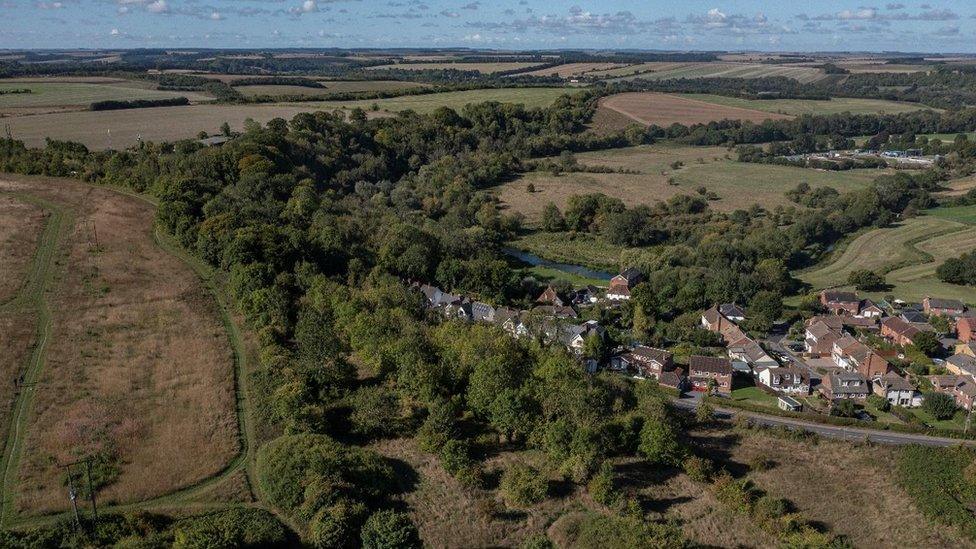
- Published22 July 2023
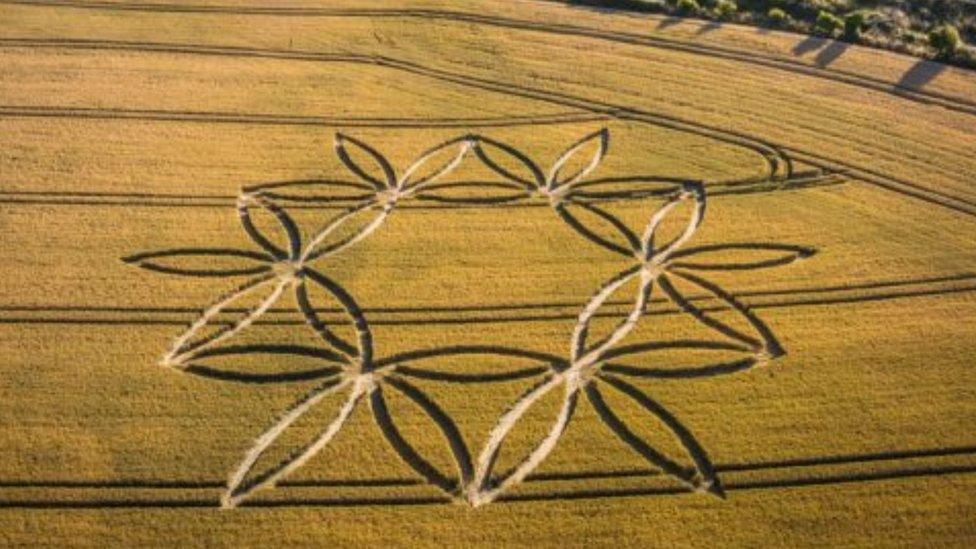
- Published19 July 2023
